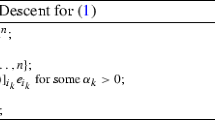Abstract
Both distributed systems and multicore systems are difficult programming environments. Although the expert programmer may be able to carefully tune these systems to achieve high performance, the non-expert may struggle. We argue that high level abstractions are an effective way of making parallel computing accessible to the non-expert. An abstraction is a regularly structured framework into which a user may plug in simple sequential programs to create very large parallel programs. By virtue of a regular structure and declarative specification, abstractions may be materialized on distributed, multicore, and distributed multicore systems with robust performance across a wide range of problem sizes. In previous work, we presented the All-Pairs abstraction for computing on distributed systems of single CPUs. In this paper, we extend All-Pairs to multicore systems, and introduce the Wavefront and Makeflow abstractions, which represent a number of problems in economics and bioinformatics. We demonstrate good scaling of both abstractions up to 32 cores on one machine and hundreds of cores in a distributed system.
Similar content being viewed by others
References
Altschul, S.F., et al.: Basic local alignment search tool. J. Mol. Biol. 3, 403–410 (1990)
Bakken, D., Schlichting, R.: Tolerating failures in the bag-of-tasks programming paradigm. In: IEEE International Symposium on Fault Tolerant Computing, June 1991
Cheatham, T., Fahmy, A., Siefanescu, D., Valiani, L.: Bulk synchronous parallel computing—a paradigm for transportable software. In: Hawaii International Conference on Systems Sciences (2005)
Dean, J., Ghemawat, S.: Mapreduce: simplified data processing on large cluster. In: Operating Systems Design and Implementation (2004)
Deelman, E., Singh, G., Su, M.-H., Blythe, J., Gil, Y., Kesselman, C., Mehta, G., Vahi, K., Berriman, B., Good, J., Laity, A., Jacob, J., Katz, D.: Pegasus: a framework for mapping complex scientific workflows onto distributed systems. Sci. Program. J. 13(3), 219–237 (2005)
Doraszelski, U.: An R&D race with knowledge accumulation. Bell J. Econ. 34, 19–41 (2003)
Frigo, M., Leiserson, C., Prokop, H., Ramachandran, S.: Cache oblivious algorithms. In: Foundations of Computer Science (FOCS) (1999)
Gentzsch, W.: Sun grid engine: towards creating a compute power grid. In: CCGRID ’01: Proceedings of the 1st International Symposium on Cluster Computing and the Grid (2001)
Ghemawat, P., Spence, A.M.: Learning curve spillovers and market performance. Q. J. Econ. 100, 839–852 (1985)
Isard, M., Budiu, M., Yu, Y., Birrell, A., Fetterly, D.: Dryad: distributed data parallel programs from sequential building blocks. In: Proceedings of EuroSys, March 2007
Kung, H.T.: Why systolic architectures? IEEE Comput. 15, 37–46 (1982)
Moretti, C., Bulosan, J., Flynn, P., Thain, D.: All-pairs: An abstraction for data intensive cloud computing. In: International Parallel and Distributed Processing Symposium (IPDPS) (2008)
Moretti, C., Steinhaeuser, K., Thain, D., Chawla, N.V.: Scaling up classifiers to cloud computers. In: International Conference on Data Mining (ICDM) (2008)
Needleman, S.B., Wunsch, C.D.: A general method applicable to the search for similarities in amino acid sequence of two proteins. J. Mol. Biol. 48, 443–453 (1970)
Oliver, T., Schmidt, B., Nathan, D., Clemens, R., Maskell, D.: Using reconfigurable hardware to accelerate multiple sequence alignment with clustalw. Bioinformatics 21, 3431–3432 (2005)
Paterson, A.H., et al.: The Sorghum bicolor genome and the diversification of grasses. Nature 457, 551–556 (2009)
Raicu, I., Zhao, Y., Dumitrescu, C., Foster, I., Wilde, M.: Falkon: a fast and light-weight task execution framework. In: IEEE/ACM Supercomputing (2007)
Rajko, S., Aluru, S.: Space and time optimal parallel sequence alignments. IEEE Trans. Parallel Distrib. Syst. 15(12), 1070–1081 (2004)
Reinganum, J.: Dynamic games of innovation. J. Econ. Theory 25, 21–41 (1981)
Reinganum, J.: A dynamic game of R&D: patent protection and competitive behavior. Econometrica 50, 671–688 (1982)
Reinganum, J.: Corrigendum. J. Econ. Theory 35, 196–197 (1985)
Reinganum, J., Stokey, N.: Oligopoly extraction of a common property natural resource: the importance of the period of commitment in dynamic games. Int. Econ. Rev. 26, 161–174 (1985)
Sarje, A., Aluru, S.: Parallel biological sequence alignments on the cell broadband engine. In: International Parallel and Distributed Processing Symposium (IPDPS) (2008)
da Silva, D., Cirne, W., Brasilero, F.: Trading cycles for information: Using replication to schedule bag-of-tasks applications on computational grids. In: Euro-Par (2003)
Spence, A.M.: The learning curve and competition. Bell J. Econ. 12, 49–70 (1981)
Spence, A.M.: Cost reduction, competition, and industry performance. Econometrica 52, 101–121 (1984)
Thain, D., Tannenbaum, T., Livny, M.: Condor and the grid. In: Berman, F., Fox, G., Hey, T. (eds.) Grid Computing: Making the Global Infrastructure a Reality. Wiley, New York (2003)
Theobald, K.B., Gao, G.R.: An efficient parallel algorithm for all pairs examination. In: Supercomputing ’91: Proceedings of the 1991 ACM/IEEE Conference on Supercomputing, pp. 742–753. ACM, New York (1991)
Ning, Z., Cox, A.J., Mullikin, J.C.: SSAHA: a fast search method for large DNA databases. Genome Res. 10, 1725–1729 (2001)
Wilde, M.: Parallel scripting for applications at the petascale. IEEE Computer, November 2009
Feldman, S.: Make—a program for maintaining computer programs. Softw. Pract. Exp. 9, 255–265 (1978)
Author information
Authors and Affiliations
Corresponding author
Rights and permissions
About this article
Cite this article
Yu, L., Moretti, C., Thrasher, A. et al. Harnessing parallelism in multicore clusters with the All-Pairs, Wavefront, and Makeflow abstractions. Cluster Comput 13, 243–256 (2010). https://doi.org/10.1007/s10586-010-0134-7
Received:
Accepted:
Published:
Issue Date:
DOI: https://doi.org/10.1007/s10586-010-0134-7




